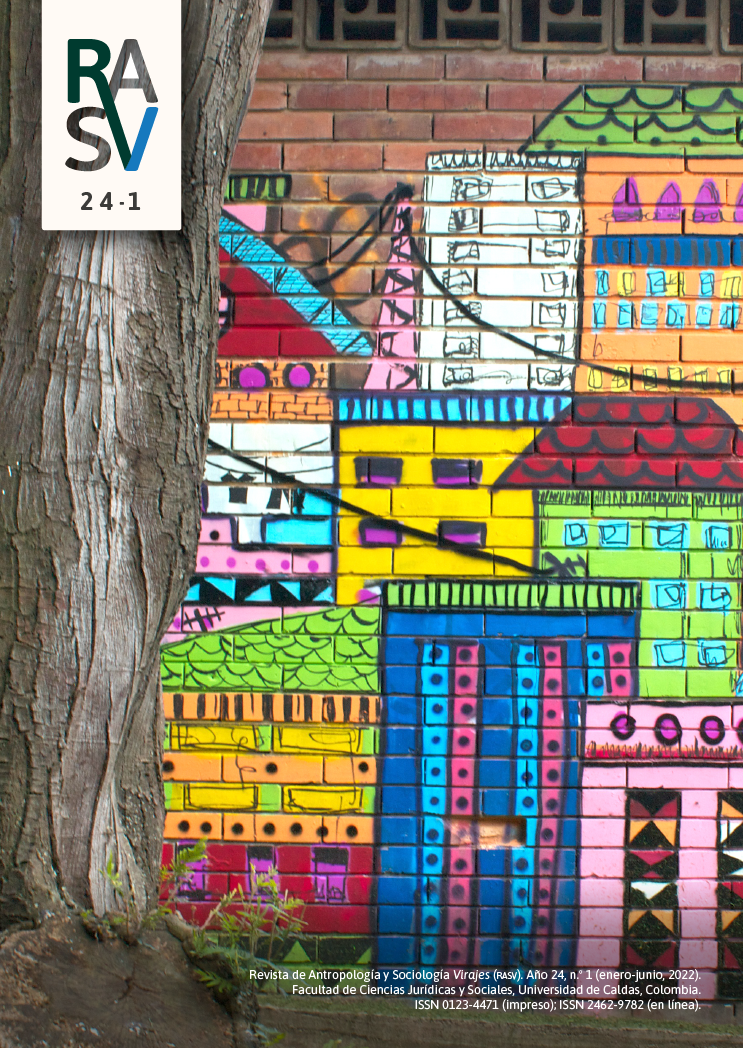Autores/as
Resumen
La violencia tiene una larga historia en nuestra especie, ha impactado las experiencias de vida de todos los seres humanos desde el paleolítico —o incluso antes— hasta nuestra época; es, ha sido y seguirá siendo parte de la existencia humana (Keeley, 1996, 2014; Guilaine y Zammit, 2005; Gat, 2006; Tooby y Cosmides, 1988). Este fenómeno multidimensional, históricamente contingente y especifico en el tiempo y en el espacio, adquiere su significado en el contexto cultural e histórico en donde se circunscribe. Por consiguiente, no todos los actos de violencia son expresados, comprendidos, ni xperimentados de manera idéntica por todos los individuos de la misma población o de diferentes poblaciones; lo que para unos es un comportamiento violento para otros no lo es, así como, lo que hoy consideramos violencia es probable que en el pasado no haya sido castigado o definido de esa manera (Koziol, 2017; Scheper-Hughes y Bourgois, 2004; Ralph 2013).
Palabras clave
Citas
Bright, L. N. (2020). Structural Violence: Epistemological Considerations for Bioarchaeology. En Colleen, M. C., Julia, R. P. y Hubbe, M. (eds.), Theoretical Approaches in Bioarchaeology (pp. 131-149). Routledge. Taylor & Francis Group.
Elbert, T. y Schauer, M. (2014). Epigenetic, Neural and Cognitive Memories of Traumatic Stress and Violence. En S. Copper y K. Ratele (eds.), Psychology Serving Humanity: Proceedings of the 30th International Congress of Psychology, Volume 2: Western Psychology (pp. 215-127). Psychology Press.
Farmer, P. (2004). An Anthropology of Structural Violence. Current Anthropology, 45(3), 305-325. https://doi.org/10.1086/382250
Ferguson, R. B. (2008). Ten Points on War. Social Analysis, 52(2), 32-49. https://doi.org/10.3167/SA.2008.520203
Galtung, J. (1969). Violence, Peace, and Peace Research. Journal of Peace Research, 6(3), 167-91. https://www.jstor.org/stable/422690
Gat, A. (2006). War in Human Civilization. Oxford University Press.
Guilaine, J. y Zammit, J. (2005). The Origins of War: Violence in Prehistory. Blackwell Publishing Ltd.
Harrod, R. y Martin, D. (2015). Bioarchaeological Cases Studies of Slavery, Captivity and Other Forms of Exploitation. En Wilson, L. (ed), The Archeology of Slavery. A Comparative Approach to Captivity and Coercion (pp. 41-63). Southern Illinois University.
Keeley, L. (1996). War before Civilization. The Myth of the Peaceful Savage. Oxford University Press.
Keeley, L. (2014). War Before Civilization-15 Years On. En T. K. Shackelford y R. D. Hansen (eds.), The Evolution of Violence (pp. 23-31). Springer New York.
Klaus, H. D. (2012). The Bioarchaeology of Structural Violence: A Theoretical Model and a Case Study. En D. L. Martin, R. P. Harrod y V. R. Perez (eds.), The Bioarchaeology of Violence (pp. 29-62). University Press of Florida.
Klaus, H. D. y Tam, M. (2009). Contact in the Andes: Bioarchaeology of Systemic Stress in Colonial Mórrope, Peru. American Journal of Physical Anthropology, 138(3), 356–68. https://doi.org/10.1002/ajpa.20944
Koziol, K. M. (2017). Shattered Mirrors: Gender, Age, and Westernized Interpretations of War (and Violence) in the Past. En D. L. Martin y C. Tegtmeyer (eds.). Bioarchaeology of Women and Children in Times of War: Case Studies from the Americas (pp. 15-26). Springer International Publishing.
Mant, M. L. y Holland, A. J. (2019). Bioarchaeology of Marginalized People. Academic Press.
Martin, D. L., Harrod, R. y Pérez, V. (Eds.). (2012). The Bioarchaeology of Violence. University Press of Florida.
Nystrom, K. C. (2014). The Bioarchaeology of Structural Violence and Dissection in the 19th-Century United States. American Anthropologist, 116(4), 765–79. https://doi.org/10.1111/aman.12151
Pérez, V. R. (2012). The Politicization of the Dead: Violence as Performance, Politics as Usual. En D. L. Martin, R. P. Harrod, y V. R. Perez (eds.), The Bioarchaeology of Violence (pp. 13-29). University Press of Florida.
Ralph, S. (2013). The Archaeology of Violence: Interdisciplinary Approaches. State University of New York Press.
Redfern, R. (2017). Injury and Trauma in Bioarchaeology: Interpreting Violence in Past Lives. Cambridge University Press.
Scheper-Hughes, N. y Bourgois, P. (2004). Violence in War and Peace. An Anthology. Blackwell Publishing Ltd.
Sofaer, J. R. (2006). The Body as Material Culture: A Theoretical Osteoarchaeology. Cambridge University Press.
Tooby, J. y Cosmides, L. (1988). The Evolution of War and Its Cognitive Foundations. Institute for Evolutionary Studies Technical Report, 88(1), 1–15. https://www.cep.ucsb.edu/papers/EvolutionofWar.pdf
Tremblay, L. A., Reedy, S. C. (2020). The Bioarchaeology of Structural Violence. A Theoretical Framework for Industrial Era Inequality. Springer International Publishing. Whitehead, N. L. (2004). Violence. School of American Research.

 PDF
PDF
 FLIP
FLIP



















